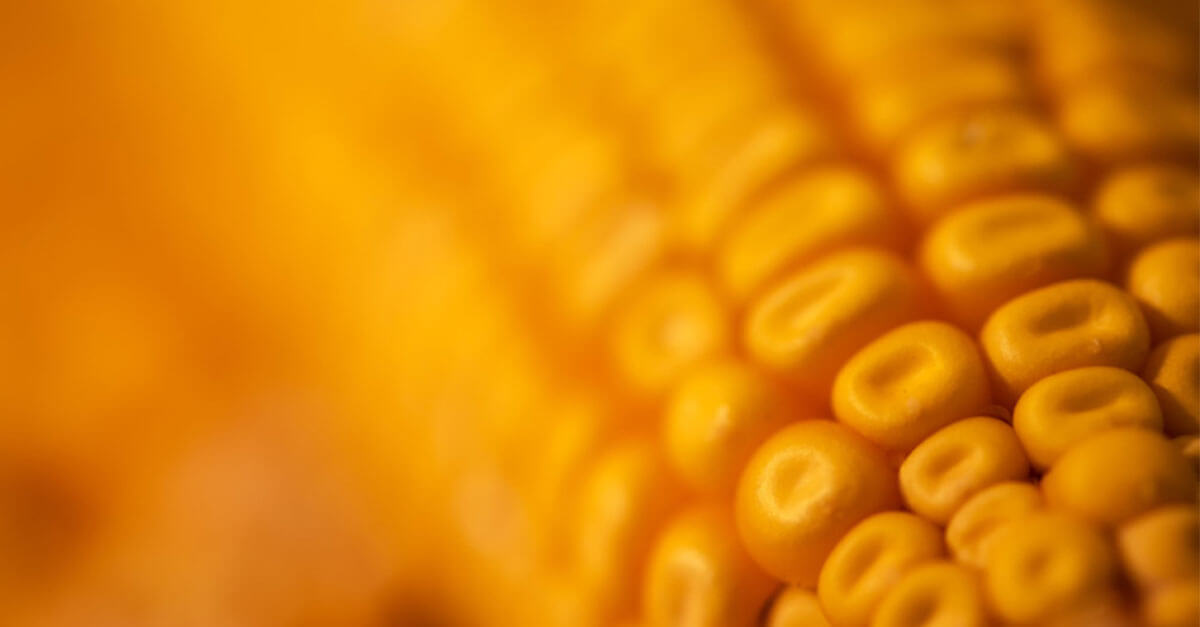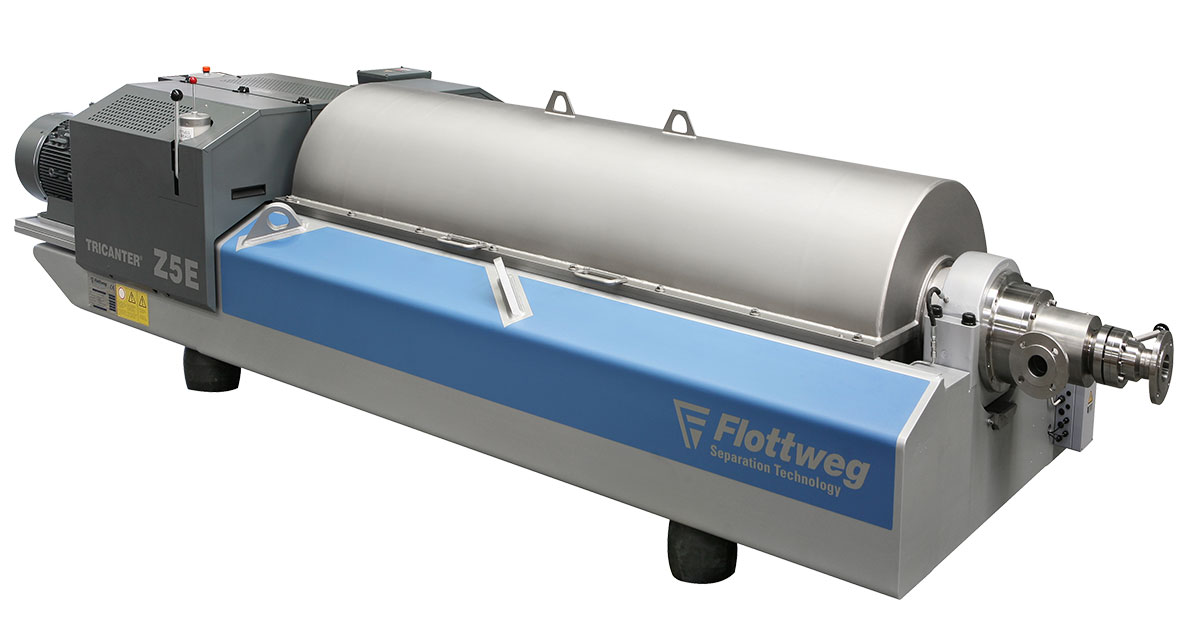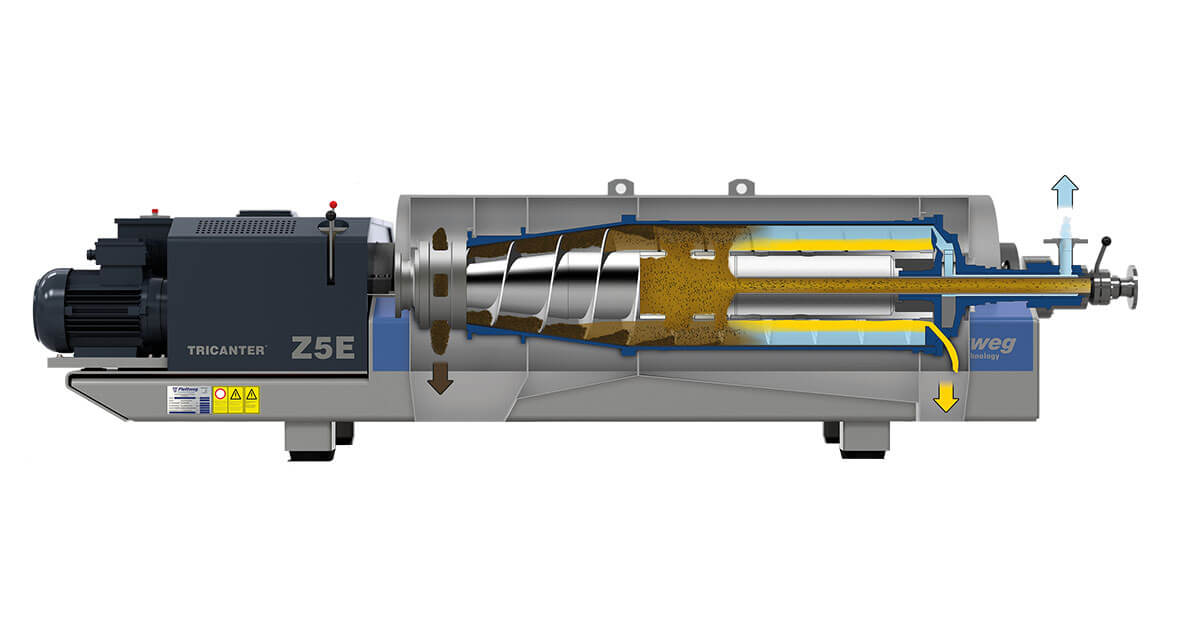2022-11-07
Yield Doubled – Flottweg Tricanter® in Bioethanol Production at Glacial Lakes Energy LLC
Glacial Lakes Energy LLC operates four bioethanol plants in South Dakota in the Northwest U.S., and has more than 20 years of experience in bioethanol production. During the production of bioethanol, the American company also produces corn oil as a by-product, which can be resold as a valuable raw material. In order to improve the yield and quality of the corn oil, Glacial Lakes Energy LLC chose to use a Flottweg Tricanter® in two plants. The new separation technology has made it possible to achieve higher yields and to produce an extremely high-quality oil. At the same time, operating times have been increased with less maintenance.
Glacial Lakes Energy operates four bioethanol plants in South Dakota: Aberdeen, Huron, Mina, and Watertown. All four facilities are managed by Managing Director Pat Hogan, and are located within a two-hour driving radius of each other. Each plant has an operations manager, production manager, and maintenance manager responsible for the maintenance and operation of each individual plant.
The GLE Watertown facility started operations in August 2002 and originally delivered a nominal capacity of 40 million gallons per year (MMgy), equivalent to around 150 million liters per year. In 2007, the plant was expanded, and currently produces more than 130 MMgy of bioethanol. GLE Mina was commissioned in June 2008 to produce around 110 MMgy, and now operates at a capacity over 140 MMgy. In December 2019, GLE acquired two additional bioethanol production plants in Aberdeen and Huron, South Dakota. Today, the Aberdeen plant produces around 50 MMgy, while Huron produces 40 MMgy of bioethanol. Overall, GLE’s bioethanol plants purchase more than 125 million bushels of corn annually and produce over 360 MMgy of ethanol, 918,000 tons of animal feed products/distillation meal, and 51,000 tons of corn oil per year.
 Corn remains the primary source to produce bioethanol.
Corn remains the primary source to produce bioethanol.
Corn Oil as a Valuable By-Product of Bioethanol Production
Bioethanol is fast becoming a sustainable alternative to fossil fuel. Various renewable raw materials, such as sugar beets, corn, or potatoes, serve as the basis for the production of bioethanol, with corn being the most important source of raw materials. Conventional bioethanol facilities produce ethanol, solids, and a residual syrup, which is created by evaporating and drying the thin stillage. An increasing number of plant operators are taking advantage of another innovative method of raw material extraction, which uses a Tricanter® in order to obtain another valuable product from the thin stillage: corn oil. This corn oil can then be used as a feed additive or for the production of biodiesel.
The design and function of a Tricanter® is similar to that of a decanter (two-phase separation). The decisive difference between these two machines lies in the discharge of the liquid. A Tricanter® separates three phases – the solid material and two liquid phases: a “heavy” liquid phase (higher density and discharged under pressure) and a “light” liquid phase (lower density and discharged without pressure). Based on this principle, the oils are separated from the thin stillage and an additional raw material is obtained. Thanks to the adjustable impeller (skimmer), it is very easy to adjust the Tricanter ® to changes in product conditions in order to guarantee an optimal separation result and the highest product quality. An increased oil yield ensures a fast return on investment.
 Glacial Lakes Energy LLC is using Flottweg’s Tricanter® in in two of their plants.
Glacial Lakes Energy LLC is using Flottweg’s Tricanter® in in two of their plants.
Low Oil Yield and an Ill-Sized Machine: The Challenges at Glacial Lakes Energy LLC
Previously, GLE used a disc separator to recover and separate oil in Aberdeen. However, since the machine was too small, had a poor recovery rate, and provided low oil yield, they decided to look for another option. Pat Hogan was convinced from the very beginning that production could be increased with an upgraded plant. After extensive research, two separation solutions made the final cut: “Ultimately, the question for us was whether to install another separator or to switch to another technology, such as three-phase separation,” explains Pat Hogan. "Both technologies are good when you look at things just in terms of oil separation. But when it comes to recovering corn oil from bioethanol production, we gravitated strongly towards three-phase separation. That’s why we opted for a Flottweg Tricanter®.” The first results with the Tricanter® then cemented complete satisfaction in Aberdeen and Hogan: “After using the Tricanter®, we saw a significant increase in capacity.”
At the start of 2021, the plant in Mina found itself in a situation similar to Aberdeen's original predicament: The separators did not produce high-quality oil and offered a low oil yield. “We were once again faced with the decision to either upgrade the system or start using three-phase separation,” explains the operations manager. “We finally went with two Tricanter®s again and achieved a great result. After installing the Tricanter®, we were able to double the oil yield." Since the two separators were still fully functional, Hogan decided to leave a machine in Mina as a back-up for weekly Tricanter® CIP procedures.
 Flottweg's Tricanter® separates the thin stillage to preserve the corn oil as a valuable re-source.
Flottweg's Tricanter® separates the thin stillage to preserve the corn oil as a valuable re-source.
Solving Problems: The Flottweg Tricanter®
Although the Tricanter® was slightly more expensive to purchase than the separator, Managing Director Pat Hogan believed there were several key advantages in favor of the Tricanter®. The way the machine handles was a very important consideration for Hogan: “The main reason I ultimately chose the Tricanter® is that it is much easier to use,” explains Hogan. "Aside from being easy to operate, it is much less prone to malfunctions than the old separators. The cost/effort required to maintain a Flottweg Tricanter® is therefore much lower than for a separator. When the machines are cared for properly, annual maintenance is sufficient. Separators, on the other hand, require quarterly maintenance in addition to large-scale maintenance work every year.” In terms of cleanability, Hogan also noticed that a Tricanter® is much easier to handle than separators, which need to be rinsed with water several times daily in addition to being cleaned weekly.
From Hogan’s perspective, these major advantages justify the cost of purchasing the Tricanter® : “We have some really good people looking after the separators in our plants. Thanks to their experience, they make handling separators and the work involved look simple. I also know, however, that these plants can cause a lot of headaches if you don't give them 100% of your attention and not all processes are running smoothly,” clarifies Hogan. “That’s where the Tricanter® makes things much easier; it is just more user-friendly.”
In the future, Hogan would still choose Flottweg’s separation technology and, in particular, the Tricanter®: "I would opt for Flottweg’s three-phase decanters again because they work right from the get-go. You install them, look after them properly, and then the machines just perform. That’s the most important thing for me.”
Author:
Bill Griffiths, Flottweg Separation Technology
Sales Manager – Edible Fats and Oils
bgriffiths@flottweg.net
